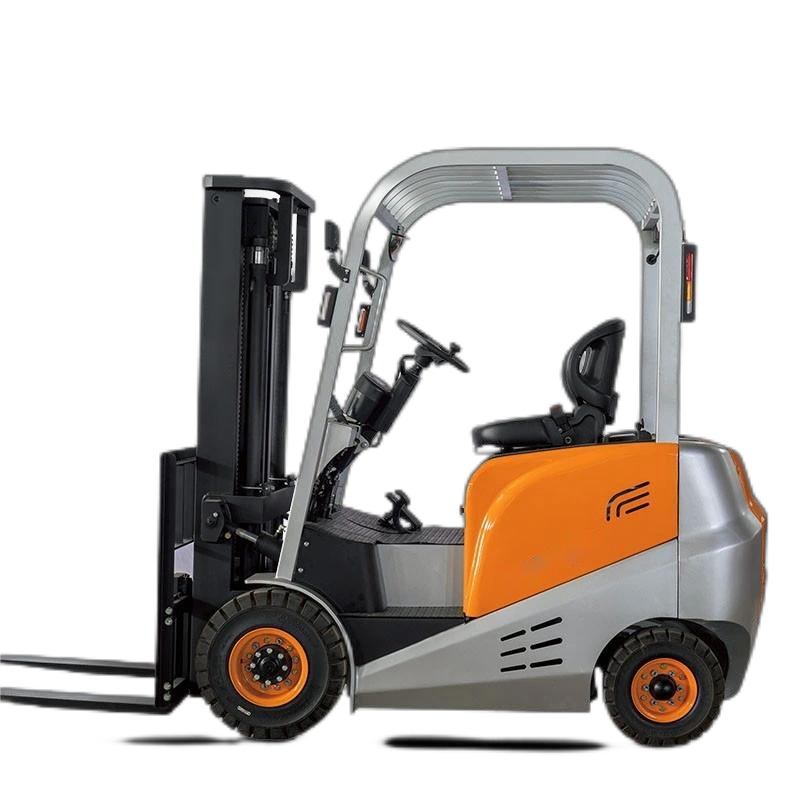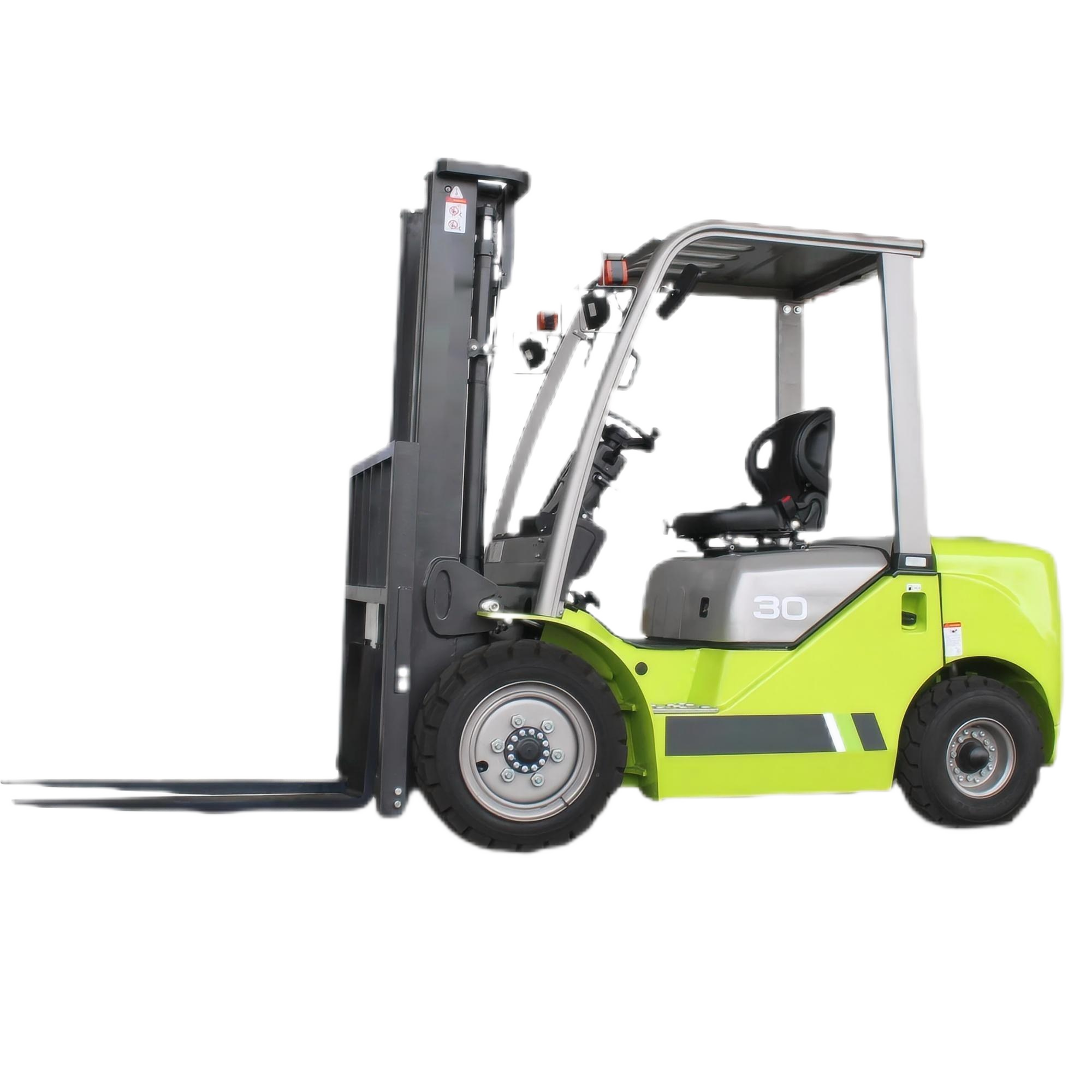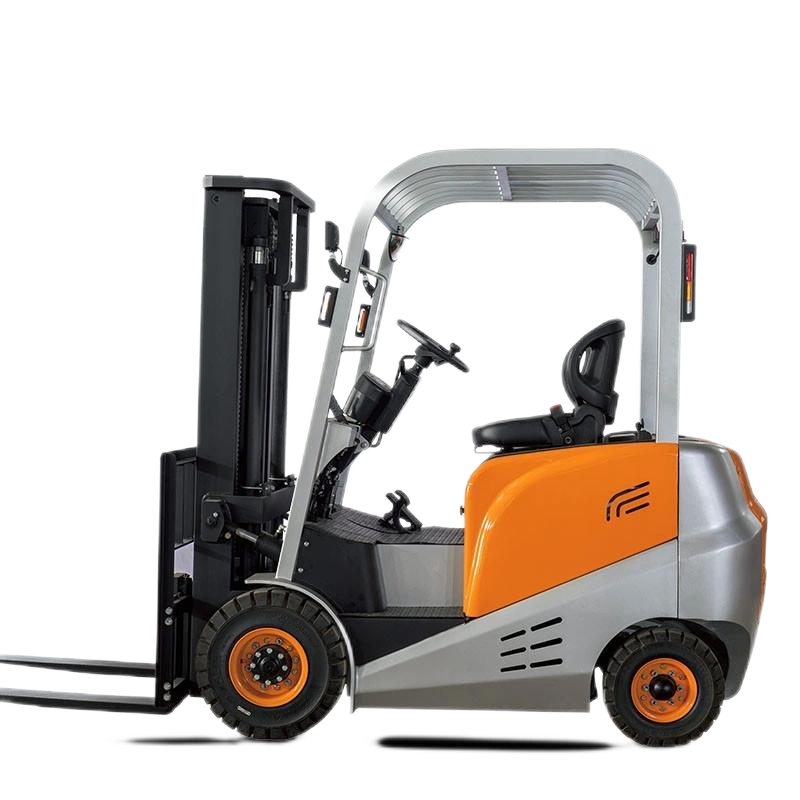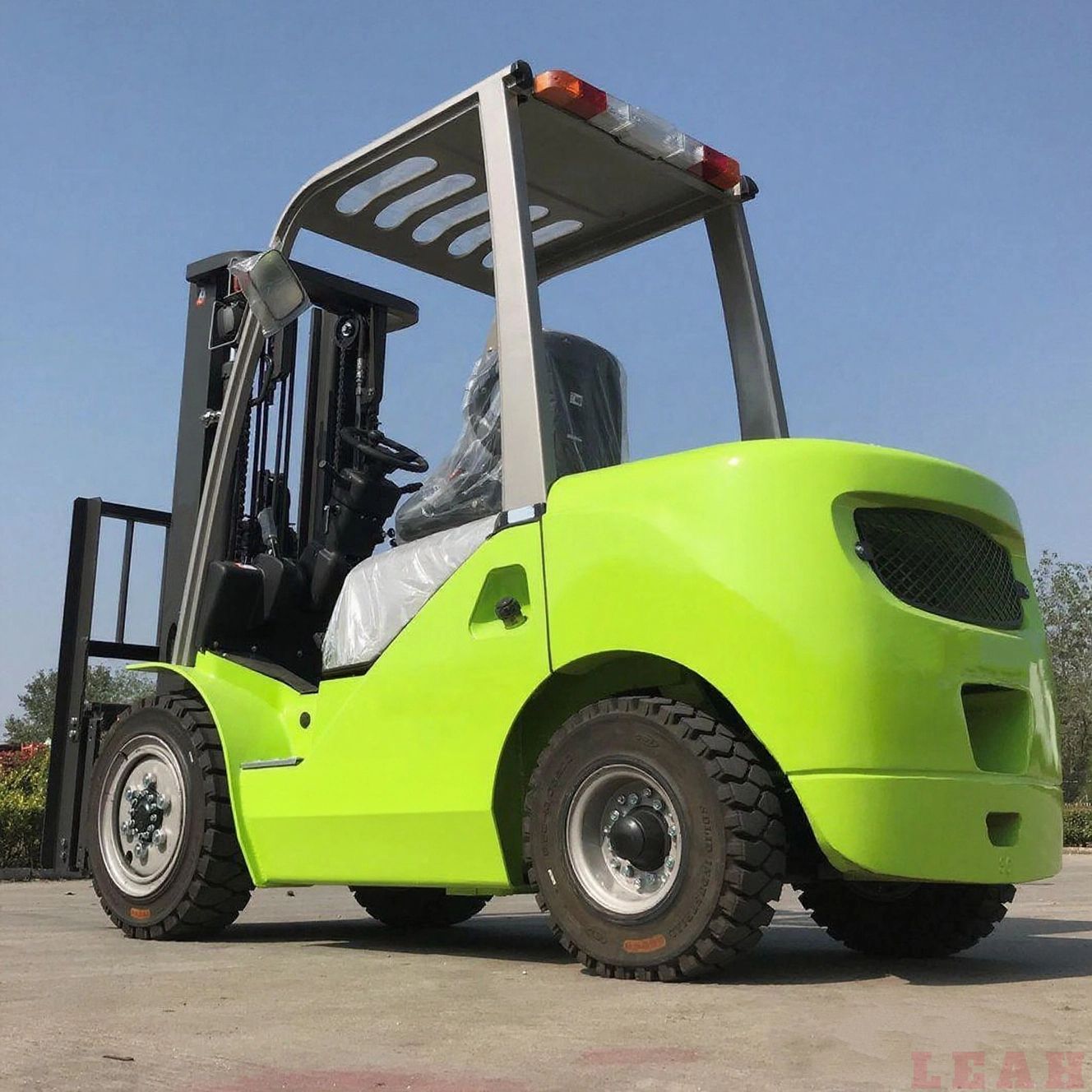Electric forklifts are industrial handling vehicles powered by rechargeable batteries, using electric energy to drive movement, lifting, and steering. Their core advantage lies in zero exhaust emissions (suitable for indoor use) and low noise, with a working principle that integrates electrical, mechanical, and hydraulic systems. Below is a detailed breakdown of their key components and operational logic.

1. Core Energy Supply System: Battery & Power Management
The battery is the "energy heart" of an electric forklift, providing electricity for all systems (driving, lifting, steering).
Key Components
- Traction Battery: Typically a lead-acid battery (traditional) or lithium-ion battery (modern, lightweight with fast charging). Capacity ranges from 200Ah to 800Ah, depending on the forklift’s load capacity (1-10 tons).
- Battery Charger: Converts alternating current (AC, 220V/380V) from the grid into direct current (DC) to recharge the battery. Modern chargers support "smart charging" (e.g., stopping automatically when fully charged to prevent overcharging).
- Power Management Unit (PMU): Monitors battery status in real time (voltage, current, temperature, remaining capacity) to prevent over-discharge or overheating. It also distributes power to the driving, lifting, and steering systems based on operational needs.
2. Driving System: Converting Electrical Energy to Mechanical Motion
The driving system controls the forklift’s forward/backward movement and speed, replacing the internal combustion engine of traditional forklifts with an electric motor.
Operational Process
- Driver Input: The driver operates the accelerator pedal (controls speed) and direction switch (selects forward/backward).
- Signal Conversion: The vehicle’s controller (VCU, Vehicle Control Unit) receives electrical signals from the pedal and switch, then adjusts the current output to the traction motor.
- Power Transmission:
- The traction motor (a DC or AC motor) converts electrical energy into rotational mechanical energy.
- The rotational force is transmitted to the drive axle via a gearbox (to adjust torque and speed) and drive shaft.
- The drive axle drives the rear wheels (most electric forklifts are rear-wheel driven) to rotate, enabling the forklift to move.
- Braking Control: When the driver releases the accelerator or steps on the brake pedal, the VCU cuts off power to the traction motor. Some models support "regenerative braking"—the motor acts as a generator to recover kinetic energy and recharge the battery (extending battery life).
3. Lifting System: Electrical-Hydraulic Synergy for Load Handling
The lifting system is responsible for raising/lowering the fork and tilting the mast (to prevent load sliding). It combines an electric motor (power source) and a hydraulic system (force amplification).
Operational Process
- Driver Input: The driver uses the lifting lever (controls fork height) or tilting lever (controls mast angle).
- Hydraulic Pump Activation: The lever triggers a solenoid valve, which activates the hydraulic pump motor. The motor drives the hydraulic pump to suck hydraulic oil from the oil tank.
- Hydraulic Oil Transmission:
- For lifting: The pump pressurizes the oil and sends it to the lifting cylinder (a hydraulic cylinder). The high-pressure oil pushes the piston in the cylinder upward, driving the mast and fork to rise.
- For lowering: The solenoid valve adjusts the oil flow direction, and the weight of the fork/load pushes the piston downward, forcing the oil back into the tank (some models use a "throttle valve" to control lowering speed).
- For tilting: The oil is sent to the tilting cylinder (installed on the mast), pushing the mast to tilt forward (for picking up loads) or backward (for stabilizing loads during movement).
- Position Limitation: A limit switch is installed on the mast to stop the fork from rising beyond the safe height, preventing mechanical damage.
4. Steering System: Electric Power-Assisted Steering (EPAS)
Most electric forklifts use rear-wheel steering (the front wheels are fixed for load-bearing, and the rear wheels rotate for steering) to achieve a small turning radius (suitable for narrow warehouses). The steering system relies on electric power assistance to reduce driver effort.
Operational Process
- Driver Input: The driver turns the steering wheel.
- Signal Detection: A torque sensor on the steering shaft detects the driver’s steering force and direction, sending a signal to the steering controller.
- Power Assistance: The controller activates the steering motor, which drives a small gear (or hydraulic pump) to provide additional torque to the steering shaft.
- Steering Execution: The amplified torque is transmitted to the rear steering axle, causing the rear wheels to rotate at the desired angle, completing the steering action.
5. Control & Safety Systems: Central Coordination
All systems are coordinated by a central controller (VCU) to ensure safe and stable operation. Key safety functions include:
- Overload Protection: A load sensor on the mast detects if the load exceeds the forklift’s rated capacity (e.g., 3 tons) and triggers an alarm or cuts off lifting power.
- Emergency Stop: A red "emergency stop button" on the dashboard cuts off all power (battery, motors) immediately in case of danger.
- Low-Voltage Protection: The PMU monitors battery voltage; if it drops below the safe threshold, it alerts the driver and shuts down non-essential systems (e.g., lifting) to reserve power for driving to the charging area.
- Anti-Slip Control: Some high-end models use wheel speed sensors to detect skidding (e.g., on wet floors) and adjust traction motor current to restore grip.
Summary of the Overall Working Flow
- The battery provides electricity to the PMU, which distributes power to each system.
- The driver’s operations (accelerator, levers, steering wheel) send signals to the VCU.
- The VCU controls the traction motor (driving), hydraulic pump motor (lifting), and steering motor (steering) to execute the desired action.
- Safety systems (limit switches, overload sensors) monitor the process in real time to prevent risks.
- After use, the battery is recharged via a charger to prepare for the next operation.
In short, electric forklifts rely on the seamless collaboration of electrical systems (energy conversion), mechanical systems (power transmission), and hydraulic systems (force amplification) to achieve efficient, eco-friendly load handling—making them indispensable equipment in modern logistics and warehousing.







